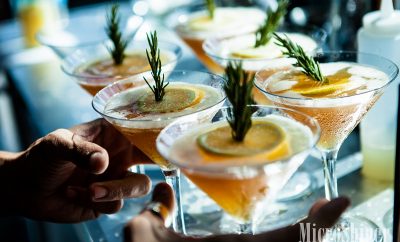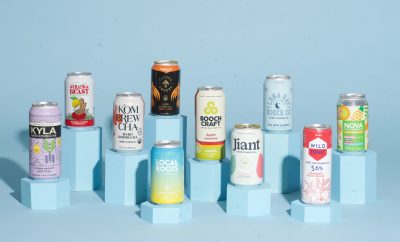
Drinking
Rosé: What’s the Big Deal?
Rosé wine is becoming more and more popular — a boozy trend that millennials are drinking up. Rose isn’t just a girly drink anymore (was it ever?) Yes, it’s pink, but that doesn’t mean that it’s just for the ladies. Rosé is more affordable than red wine, but it still has complex flavor and can be fruity, savory, sweet, or floral (it’s a common misconception that rosé is only a “sweet” wine). So, what’s the big deal with rosé and why has it become so popular these days?

First, affordability: Rosés are usually a bargain, especially compared with red wines. These wines are young and relatively cheap to make. They’re also still under appreciated/undervalued in the U.S., which explains why French rosé is affordable despite the fact that most French imports are pretty pricey for American consumers. This means that you’ll have plenty of good options in the $10–$15 range. Good wine is affordable and it’s not longer a splurge thanks to rosé.
Perhaps because of the low cost and the common misconception that rosé is sweet and girly, there are certain people who look down on it as a lesser wine. Another reason that rosé is often cast as red wine’s ugly stepsister is that rosé, unlike red wine and Helen Mirren, does not improve over the years — so don’t get any ideas about hoarding it in your cellar for half a century. But we don’t think there’s any shame in drinking something with last year printed on the label. You shouldn’t drink (and probably won’t find) anything that’s dated more than two or three years back.
Common question: Is rosé just a mix of red and white wines? Answer: No. While it seems intuitive to think that rosé is just a mixture of red and white, the pink color actually comes from the red skins of the grapes. To be more exact, here’s the process of actually making rosé:
Red grapes are lightly crushed and left to macerate with their red skins for a little while (anywhere from a few hours to a few days), after which the juice is strained out from the solid stuff (called “must”) and fermented in tanks. And viola, rosé!
Another reason rosé is has become so popular, aside from its affordability: The launch of Instagram star The Fat Jew (Josh Ostrovsky’s) own label, White Girl Rosé. With an Instagram account boasting over 10 million followers, it’s no wonder that the label took off and became an instant success. Launched in the summer of 2015 after the Hampton’s almost ran out of rosé, Ostrovsky saw an opportunity for an extravagant joke and major business. The label is (not surprisingly) still doing very, very well.
Cheers to the affordable and under appreciated rosé!





0 comments